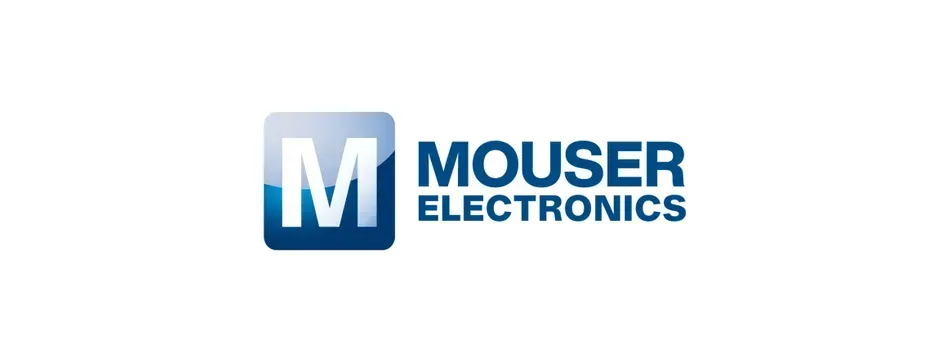Engineering interconnects for harsh environments
Article #4 of our Industrial IoT revolution series: To deal with the extremities of harsh environments like construction, mining, or agriculture, physical and wireless interconnects need to be engineered for durability.
This is the fourth article in a 6-part series featuring the connectivity technologies that are enabling the Industrial IoT revolution. The series introduces and explains the applications of wired and wireless connectivity technologies in various industries. This series is sponsored by Mouser Electronics. Through its sponsorship, Mouser Electronics shares its passion for technologies that enable the continued sustainable growth of Industrial IoT.
Introduction
In construction, mining, agriculture, and several other areas, automation systems are almost always exposed to difficult environmental conditions like dust, moisture, extreme temperatures, chemicals, and stress. Dealing with these conditions can be a challenge especially for the electronic devices and interconnects that power the equipment.
In this article, we explain some features that make an interconnect durable against the extreme conditions present in harsh environments. We showcase some interesting wired and wireless interconnect technologies from Amphenol Corporation that are a perfect fit for harsh environment use cases.
Features of harsh environment interconnects
When designing interconnects for harsh environment applications like construction or mining, there are certain desired features that the technology must offer in order to be able to function there with minimal disruption. Here are some features that make an interconnect durable for use in harsh environments:
Ingress Protection
Ingress Protection (IP) is an international standard that certifies electronic devices based on their ability to withstand dust and moisture. [1] Electronic devices that comply are tagged with a two-digit code, indicating the level of protection the device offers to dust and moisture. The value of the first digit can range from 1 to 6 and indicates the ability of the device to withstand solid objects like dust. The second digit varies between 1 and 9 and signifies the protection offered against liquids like water.
Interconnects used in harsh environments need to be rated with a rating equivalent to or better than IP67 or IP68 to be suitable for operation. This allows them to be used as a reliable point of information transfer in harsh environment communication systems.
Ability to withstand high mechanical stress
Mechanical stress is a dominant physical effect that can cause deformations in devices and render them completely useless. Interconnects must use a unique construction that protects them from the kind of force or stress that will be present in their working environments. This includes vibrations or pressures for an extended period of time.
Working in extreme temperatures
Interconnects in harsh environments need to be designed to withstand extreme temperatures at mining sites that can fall to sub-zero and soar above a hundred degrees. Interconnects should withstand these extremes without any impact on signal integrity.
360-degree shielding
360-degree shielding is the ability of the interconnect to protect itself and the signal it carries from its surroundings. This includes not only the physical parameters but also the electromagnetic interferences that may arise during the operation of nearby electronic devices or systems. By following Electromagnetic Interference/Electromagnetic Compatibility (EMI/EMC) design guidelines, it is possible to develop interconnects that don’t get affected by environmental interferences and, at the same time, do not cause interference to other electronic equipment. The guidelines include design instructions for routing, wiring, grounding, and placing electronic components like ceramic capacitors to reduce interferences.
Interconnects engineered for harsh environments by Amphenol
Amphenol Commercial Products Harsh Environment Connectors provide the ideal solution for data transfer in harsh or demanding environments against physical and environmental conditions. This connector system offers a full range of rugged devices with various performance ranges for operating temperatures that meet IP-ratings, International Electrotechnical Commission (IEC) specifications, and are Restriction of Hazardous Substances Directive (RoHS) compliant.
Here is a section covering the popular interconnecting technologies by Amphenol and some of their possible application scenarios:
Amphenol RF IP67 TNC And RP-TNC Tamper Proof Connectors for preventive maintenance
Amphenol RF offers a wide selection of waterproof IP-rated Threaded Neill–Concelman (TNC) and Reverse-Polarity TNC (RP-TNC) connectors designed specifically for use in applications where systems may be compromised through exposure to the elements or external tampering. These products provide strong protection to secure against anything that may compromise system performance.
TNC and RP-TNC connectors utilize the familiar threaded interface, which ensures mating stability and reliable electrical performance. This interface is available in a variety of configurations, including front-mounted bulkhead jacks, which can be fastened on the inside of a panel or enclosure, and a design element that adds an extra layer of security for sensitive systems.
Amphenol RF FAKRA to AMC Cable Assemblies for precision navigation/autonomous vehicles
Amphenol RF Fixed-Length FAKRA to AMC Cable Assemblies combine the automotive industry-standard Fachkreis Automobil (FAKRA) connector with the micro-miniature Amphenol Micro Coaxial (AMC) connector on an ultra-flexible coax cable. This combination allows for easy connection/disconnection and is ideal for automotive and IoT applications that require a compact infrastructure.
The FAKRA bulkhead straight-plug connector offers color coding and available keying to prevent mismating during the installation process. The AMC right-angle plug connector features a low profile and small board footprint. The connectors can be terminated with any other AMC or similarly keyed FAKRA, respectively, and are IP67 rated when mounted for protection in case of temporary submersion.
Amphenol RF SMA to AMC Cable Assemblies for drones
Amphenol RF SMA to AMC Cable Assemblies feature a standard bulkhead SubMiniature version A (SMA) jack (female) on one end and a right-angled AMC cable plug (male) on the other end. These cable assemblies are available in 1.13mm, 1.32mm, and 1.37mm micro-coaxial cable types. The SMA to AMC cable assemblies offer IP-67 and non-IP-67 SMA bulkhead jack to AMC plug configurations.

These IP-67 and non-IP-67 assemblies accommodate thicker panels of 5.95mm and 3.2mm, respectively. The cable assemblies operate from -40°C to 90°C temperature range. Typical applications include WLAN, M2M communications, mining equipment, and outdoor communication equipment.
Amphenol RF IP67/IP67RP Sealed Cable Assemblies for wireless communication
Amphenol RF Sealed Cable Assemblies are TNC and SMA assemblies featuring IP67/IP67RP protection against dust and moisture. Amphenol RF IP67/IP67RP TNC Cable Assemblies feature a miniature, threaded weatherproof connector with a constant 50Ω impedance and a frequency range of DC to 11GHz. The connectors feature a threaded coupling interface that will not de-couple during intense vibration. TNC assemblies are versatile and durable and can be used in many applications.

Amphenol RF SMA Cable Assemblies are available in in-series and between series configurations. SMA connectors are semi-precision, sub-miniature, high-frequency connectors that offer reliable broadband performance. Amphenol RF IP67/IP67RP SMA assemblies include flexible and semi-rigid (hand conformable) cable types. SMA assemblies on SemiRigid cable are DC to 18GHz, and assemblies using flexible cable perform up to 12.4GHz, (this varies by cable type), with both cable types offering low reflection and constant 50Ω impedance.
Amphenol RF SMA connectors for asset tracking with RFID
Amphenol RF SMA Connectors comprise a wide range of standard and custom SMA products for use in semiconductor manufacturing and test equipment. Amphenol RF SMA includes PCB-mount and cable-mount connectors, as well as a variety of adapters, terminators, attenuators, and cable assemblies to meet a variety of designs.

Amphenol RF also offers custom end-launch solutions, which can be optimized to provide exceptional performance for customer-specific PCB configurations.
Conclusion
To cater to the new demands that arise due to the penetration of automation systems in all industries, systems need to evolve and offer feature-packed connectivity options for maximum safety and efficiency. Engineering them to be durable against harsh environments ensures that the devices last long and the probability of failures is greatly reduced.
This article is based on an infographic initially published by Mouser and Amphenol in an e-magazine. It has been substantially edited by the Wevolver team. It's the fourth article of a 6-part series that covers the features of interconnects designed for harsh environments. Future articles will introduce readers to some more interesting applications of connectivity technologies enabling the IIoT revolution in various industries.
Article one explained how electrical interconnects are engineered in data centers to deliver high power in a small footprint.
Article two was about the sensing technologies used in Building Automation Systems
Article three analyzed the key trends and challenges for connectivity technologies used in smart manufacturing.
Article four provided an overview of electrical interconnects for harsh environments.
Article five explored the connectivity technologies used at construction sites.
Article six examined the applications and performance parameters of antennas that enable wireless communication.
About the sponsor: Mouser
Mouser Electronics is a worldwide leading authorized distributor of semiconductors and electronic components for over 1,100 manufacturer brands. They specialize in the rapid introduction of new products and technologies for design engineers and buyers. Their extensive product offering includes semiconductors, sensors, interconnects, passives, and electromechanical components.

References:
[1] IEC 60529:1989+AMD1:1999+AMD2:2013, Degrees of protection provided by enclosures (IP Code), ISBN 978-2-8322-1086-4, [Online], Available from: https://webstore.iec.ch/publication/2452




